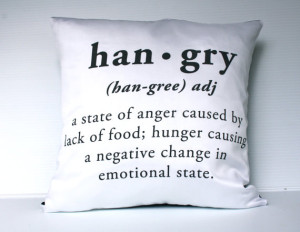It’s Lent again. Every year I give up the same thing. Snacking. I have never come close to making it the whole 40 days. Although I can’t quite seem to give it up, I have intentionally cut down significantly in the past years since I have become a mother. In my former, pre-Mama life I ate all day long. Basically every time I passed the fridge. Mostly out of boredom, but I also did some emotional eating. Old habits die hard, but when I became a mother I knew I did not want to model this type of behavior and pass this unhealthy habit on to my son.
We know that child obesity rates are skyrocketing in the United States and which means our children are at risk. In my research as a Ph.D. candidate, I focus on understanding eating behavior. In order to understand the eating habits of children, we first need to understand the feeding habits of parents. We supply the food therefore we inevitably play a leading role in what our children eat and the way our children eat.
I realize what a big impact I will have on Nicolas’ future eating habits. Therefore, I made a promise to myself not use snacks as a pacifier and to not live in fear of “hangry” kids. In the early days of life, many fussy babies take quickly to pacifiers. When those babies get to old for pacifiers, the pacifiers are replaced by portable snack containers of Goldfish crackers or plastic baggies of cheerios to soothe the restless toddler. This is akin to emotional eating–or maybe we should call it emotional feeding. When those toddlers get too old for crackers and cereal in snack traps, they eventually turn into grazing, out-of-control-all-day-snacking adults. Like me.
If you are a snacker, or you are raising little snackers, consider these three tips to set your children up for good eating habits.
Don’t live in fear of hangriness.
I find myself wondering if many of today’s children  understand what the word “appetite” means. It would imply that these children have experienced hunger at some point. Many parents use snacks frequently because they are afraid their child will get hungry. Hunger is a natural body phenomenon that tells us it is time to eat. It is not dangerous, and we need to learn to tolerate certain levels of it and the changes in mood that comes along with it.
understand what the word “appetite” means. It would imply that these children have experienced hunger at some point. Many parents use snacks frequently because they are afraid their child will get hungry. Hunger is a natural body phenomenon that tells us it is time to eat. It is not dangerous, and we need to learn to tolerate certain levels of it and the changes in mood that comes along with it.
We need to teach our children to tolerate hunger, manage their feelings, and treat others well. Hanger is not an excuse for bad behavior.
Food should not replace discipline.
If anyone has seen North West’s epic tantrum during Fashion Week, you know that snacks don’t replace  discipline. But they do buy time. The photos depict that little “Nori” was understandably starting to get restless during a fashion show. Some fruit snacks staved off the tantrum for a minute. Then the babyfood pouch bought Kimye at least another 30 seconds. But alas, epic tantrum prevailed.
discipline. But they do buy time. The photos depict that little “Nori” was understandably starting to get restless during a fashion show. Some fruit snacks staved off the tantrum for a minute. Then the babyfood pouch bought Kimye at least another 30 seconds. But alas, epic tantrum prevailed.
Snacks held off the tantrum for a minute, but they did not save the day.
Snacks provide a distraction and quiet down most children—after all, it’s really difficult to cry while you are chewing and swallowing, right?
We need to brush up on strategies to appropriately handle behavior challenges so that we don’t have to resort to pulling out snacks every time the road to child rearing gets a little bumpy.
Feed children snacks because they are hungry.
Don’t feed children because they are bored, restless, or their Ipad battery died. Children should learn that hunger is a cue for eating, and eating puts those hunger feelings to rest. If your kid doesn’t want that string cheese enough to sit down in a chair and eat it—he is really not that hungry. Don’t chase him down with it.
I realize there is a chance that someday Nico may become a snacker too, but I can sleep at night knowing that it will not be because I loaded up his pockets with Cheez-Its just in case he got hungry.













